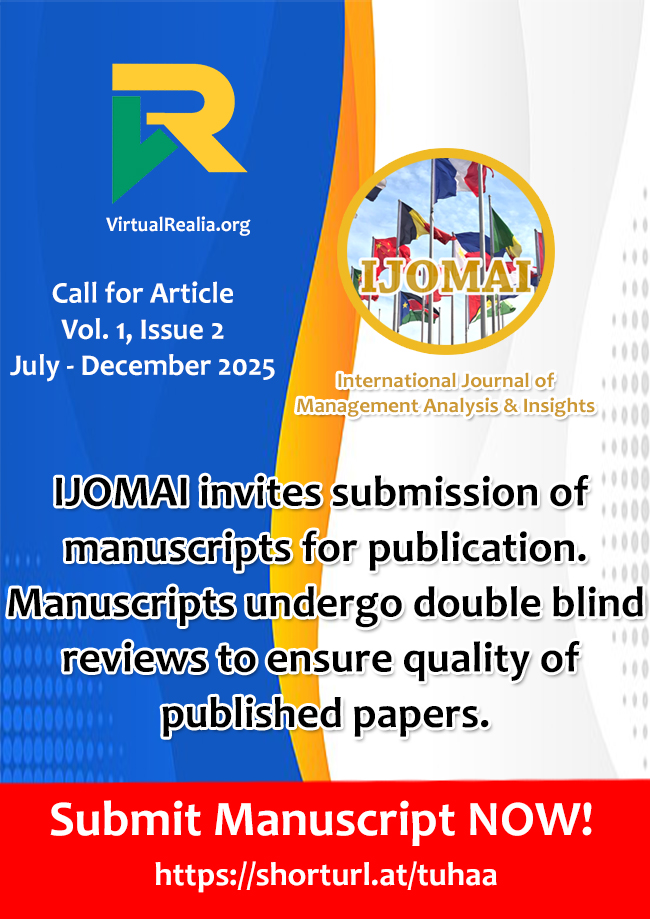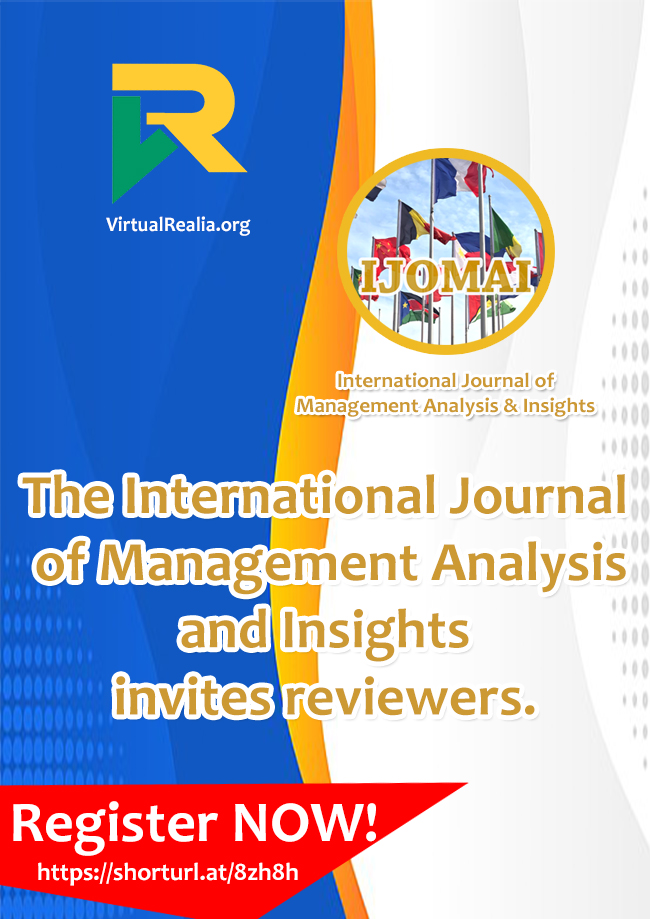| 1 |
Author(s):
Gletzmar Bitas Igcasama , Eric Villamar .
Page No : 1-15
|
Internal Control Practices of New and Established Cooperatives in Dinagat Islands
Abstract
This study evaluated the internal control practices of new and established cooperatives in the Province of Dinagat Islands using the Committee of Sponsoring Organizations of the Treadway Commission (COSO) framework as its foundation. A quantitative descriptive-comparative design was employed, with 40 cooperative officers and members serving as respondents. Data were gathered through a structured survey questionnaire and analyzed using descriptive statistics, t-tests, and ANOVA to determine compliance levels and differences across cooperative profiles. Results revealed that both new and established cooperatives generally complied with internal control practices in the areas of cash handling, inventory management, and machinery and equipment oversight. Established cooperatives demonstrated higher levels of compliance, particularly in inventory management and machinery and equipment oversight, with statistical tests confirming significant differences in these areas. However, gaps were noted in risk assessment, IT system integration, and fraud detection, where both groups showed partial or non-compliance. The findings highlight the importance of continuous improvement and capacity building, particularly for new cooperatives, while encouraging established cooperatives to sustain and upgrade their practices. The study concludes that internal control systems remain central to cooperative sustainability and recommends training programs, policy reviews, and the adoption of technology-driven tools to strengthen governance and operational efficiency.
Keywords: Internal Control, Coso Framework, Cooperative Governance, Cash Handling, Inventory Management, Asset Oversight, Dinagat Islands
| 2 |
Author(s):
Venissa N. Broqueza, Yuri U. Pendon.
Page No : 16-28
|
Factors Influencing Spending Decision Among Non-Teaching Employees at Surigao Del Norte State University (SNSU) City Campus
Abstract
This study investigated the factors influencing the spending decisions of non-teaching personnel at Surigao del Norte State University (SNSU). Guided by the Theory of Planned Behavior and related frameworks in behavioral economics and psychology, the research employed a descriptive-correlational design to analyze how cultural, social, personal, and psychological factors impact financial behavior. Data were gathered from 84 respondents using a validated survey instrument and analyzed using descriptive statistics, Pearson correlation, and regression analysis. Results revealed that personal, psychological, and economic factors significantly influence spending decisions, while cultural and social factors showed no significant relationship. Additionally, civil status, monthly income, and length of service were found to significantly affect spending patterns. These findings underscore the need for institution-based financial literacy programs that are responsive to employees’ demographic and psychological profiles. The study provides evidence-based insights that can support policy development and targeted interventions to enhance financial well-being and decision-making among university personnel.
| 3 |
Author(s):
Arneil S. Enario.
Page No : 29-40
|
Knowledge Management Practices and Organizational Performance of Academic Institutions for Enhanced Business Service Delivery
Abstract
This study examined the relationship between knowledge management practices and organizational performance in higher education institutions. Using a descriptive-correlational design, data were collected from 107 university administrators in Palawan Province, Philippines, through a validated researcher-developed questionnaire. Descriptive statistics, one-way ANOVA, and Pearson’s r correlation were employed to analyze the data. Results revealed that knowledge management practices, particularly storage and distribution, were consistently rated high across institutions. Organizational performance also achieved high ratings, with notable strengths in governance, community relations, and teaching and learning quality. No significant differences were observed when data were analyzed across demographic profiles. A strong positive correlation was found between knowledge management and organizational performance, emphasizing the role of systematic knowledge integration in enhancing institutional effectiveness and service delivery. These findings highlight the need for higher education institutions to adopt policies and practices that strengthen knowledge creation, storage, distribution, and utilization to support strategic decision-making and foster innovation in academic and administrative functions. Keywords: Knowledge Management, Organizational Performance, Higher Education, Institutional Effectiveness, Service Delivery, Academic Leadership
| 4 |
Author(s):
Jorven R. Villafranca, Jiffrey B. Saguran.
Page No : 41-53
|
Efficiency and Performance Dynamics of Member-Owned Electric Cooperatives: Insights from SURNECO, Philippines
Abstract
This study evaluated the efficiency and performance dynamics of the Surigao del Norte Electric Cooperative (SURNECO), a member-owned electric utility in the Philippines, using the principles of the International Cooperative Alliance (ICA) and the performance assessment framework of the National Electrification Administration (NEA). Employing a descriptive-evaluative research design, the study involved 780 respondents proportionately selected through Slovin’s formula. Data were collected using validated questionnaires and analyzed through descriptive statistics, Pearson correlation, and analysis of variance (ANOVA). Results revealed a moderate level of organizational efficiency and a moderately high level of organizational performance, with voluntary and open membership obtaining the highest rating, while member economic participation and democratic control were rated lowest. Technical performance was rated higher compared to financial and governance parameters. A strong positive correlation between efficiency and performance was observed, highlighting that improved adherence to cooperative principles enhances organizational outcomes. Significant differences were noted when respondents were grouped by consumer classification and consumption level. These findings emphasize the need to strengthen governance mechanisms, enhance member participation, and adopt technology-driven solutions to improve operational efficiency and service reliability, ensuring the cooperative’s sustainability and continued contribution to community development.
Keywords: Organizational Efficiency, Organizational Performance, Member-Owned Cooperatives, SURNECO, Cooperative Principles, NEA Performance Assessment, Rural Electrification.
| 5 |
Author(s):
Stephanie Gwen Marie P. Ong.
Page No : 54-68
|
Financial Management Practices of Public-School Heads in Surigao del Sur Division
Abstract
This study examined the financial management practices of public-school heads in the Division of Surigao del Sur and their relationship with the degree of manifestation in school-based management (SBM). Employing a descriptive–correlational research design, the study involved 218 respondents selected through multi-stage cluster sampling from a population of 498 school heads. A researcher-made questionnaire validated by experts and tested for reliability was used to gather data. Findings revealed that school heads highly practiced financial management in terms of fiscal allocation, transparency, accountability, and ethical considerations. The degree of manifestation in SBM was generally rated as frequently to always manifested, with notable strengths in leadership, governance, and human resource development, but challenges remained in learner outcomes under curriculum and teaching. Statistical analysis showed significant differences in financial management practices when grouped according to educational attainment, school level, and SBM level. Furthermore, a positive and significant correlation was found between SBM and financial management, confirming their interdependence. These results highlight the importance of enhancing the financial competencies of school heads and strengthening SBM maturity to sustain accountability, equity, and quality in public education.
Keywords: Financial Management Practices; School-Based Management; Transparency; Accountability; Ethical Leadership; Surigao Del Sur Public Schools


